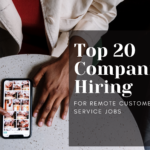With these best 7 job application techniques securing a job will become much easier for you. In the dynamic landscape of job hunting, securing the right position often hinges on mastering the art of job applications. A successful job application highlights your qualifications, showcases your unique strengths, and aligns seamlessly with the employer’s needs. This comprehensive article delves into the intricacies of crafting compelling job applications, providing valuable insights and techniques to navigate the competitive job market with finesse.
Crafting an Irresistible Application with these 7 best Job application Techniques
1. Tailor Your Resume and Cover Letter
One of the most fundamental yet often overlooked aspects of job applications is tailoring your resume and cover letter for each specific opportunity. Resist the temptation to submit generic documents; instead, carefully analyze the job description and customize your application to emphasize the skills and experiences most relevant to the position.
Consider the employer’s pain points and aspirations when drafting your cover letter. Addressing these directly not only showcases your understanding of the company’s needs but also positions you as a solution to their challenges.
2. Showcase Quantifiable Achievements
Numbers and statistics are powerful tools in job applications. Instead of merely listing job duties, focus on quantifiable achievements that demonstrate your impact. Whether it’s exceeding sales targets by a certain percentage, streamlining processes to reduce costs, or spearheading projects that led to measurable outcomes, providing concrete evidence of your contributions captures the attention of employers.
3. Utilize Keywords from the Job Description
Many companies use Applicant Tracking Systems (ATS) to streamline the initial stages of the hiring process. These systems scan resumes for specific keywords, making it imperative to align your application with the language used in the job description. Identify key terms and incorporate them strategically into your resume and cover letter to increase the likelihood of passing through the ATS screening.
4. Create a Standout LinkedIn Profile
In the digital age, employers often extend their evaluation beyond application materials. A robust LinkedIn profile serves as an online extension of your resume, allowing employers to gain a more comprehensive understanding of your professional background.
Ensure your LinkedIn profile is complete, with a professional photo, comprehensive work history, and a compelling headline. Leverage the platform to showcase additional achievements, skills, and endorsements. Engaging actively with relevant content and connections on LinkedIn can further enhance your professional visibility.
Optimizing the Application Process
5. Keep Track of Applications
The job application process can quickly become overwhelming without proper organization. Maintain a detailed spreadsheet or document to track the positions you’ve applied for, application deadlines, and any follow-up actions required. This systematic approach helps you stay organized, ensuring you don’t miss critical deadlines and enabling effective follow-up.
6. Follow Application Instructions Carefully
Employers provide specific instructions for a reason, and following these instructions meticulously demonstrates your attention to detail and respect for the employer’s process. Whether it’s submitting documents in a particular format, responding to specific questions, or including a portfolio, adhering to instructions showcases your professionalism.
7. Leverage Professional Networks
Networking remains a potent tool in the job search arsenal. Beyond traditional job boards, explore professional networks to discover hidden job opportunities. Attend industry events, join relevant associations, and actively engage with professionals on platforms like LinkedIn. Personal connections and recommendations often play a pivotal role in accessing unadvertised job openings.
Frequently Asked Questions (FAQs)
Q1: How long should my cover letter be?
A1: Ideally, your cover letter should be concise and focused, ranging from three to four paragraphs. It should convey your enthusiasm for the position, briefly highlight your key qualifications, and end with a strong closing statement.
Q2: Is it necessary to include a professional summary on my resume?
A2: While not mandatory, a professional summary can be beneficial, particularly for mid-career professionals. A well-crafted summary provides a snapshot of your qualifications, expertise, and career goals, offering recruiters a quick overview.
Q3: How do I handle employment gaps in my resume?
A3: Be transparent about employment gaps, but focus on how you utilized that time for personal and professional development. If relevant, highlight any freelance work, volunteer activities, or additional education undertaken during the gap.
Q4: Should I include hobbies and interests in my resume?
A4: The inclusion of hobbies and interests depends on their relevance to the job. If your extracurricular activities showcase skills or qualities that align with the job requirements, include them. Otherwise, use that space for more pertinent information.
Q5: How do I approach salary discussions in the application process?
A5: It’s generally advisable to defer salary discussions until later stages of the hiring process, such as during interviews or when an offer is extended. Focus on demonstrating your value to the employer before entering into detailed salary negotiations.
Navigating Success in Your Job Application Journey
Mastering the job application process is a multifaceted endeavor that requires strategic thinking, attention to detail, and a nuanced understanding of the employer’s needs. By tailoring your application materials, utilizing keywords, maintaining an organized approach, and leveraging professional networks, you position yourself as a standout candidate in a competitive job market.
Remember, each application is not just a submission but an opportunity to showcase your unique strengths and qualifications. With a strategic and thoughtful approach, you’re well on your way to navigating the job application journey with confidence and increasing your chances of securing that coveted position.
In a landscape where first impressions matter, the ability to craft compelling applications is a skill that can set you apart. As you embark on your job search journey, embrace the iterative nature of the process, learn from each application, and continually refine your approach. With dedication, resilience, and strategic planning, you’ll navigate the complexities of the job application process with finesse and ultimately find success in your professional endeavors. I hope these best 7 job application techniques will help get your dream job.

As an experienced career coach and writer, I’ve dedicated myself to empowering job seekers worldwide through JobSearchScore. With a passion for helping individuals across the complexities of the job market, I curate invaluable resources, offer expert advice, and provide actionable strategies to support career advancement and success.




